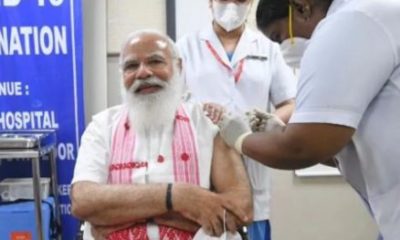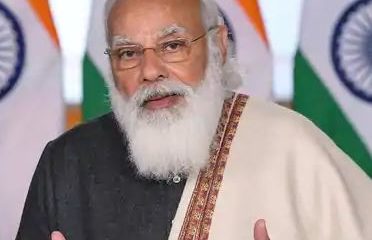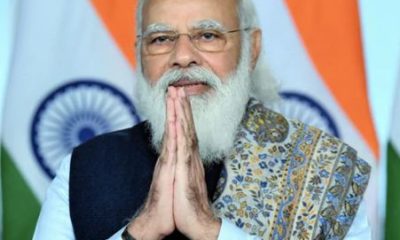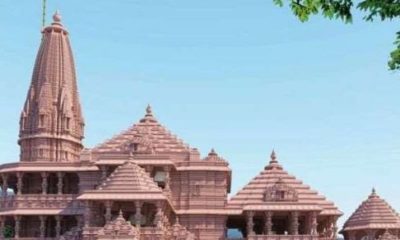Feature
Richard Rahul Verma confirmed as US envoy to India

Washington: The US Senate has confirmed Richard Rahul Verma, President Barack Obama’s nominee to be the next American ambassador to India, making him the first Indian-American envoy in New Delhi.
Verma, 46, a former key aide to then secretary of state Hillary Clinton, was approved by the Senate by a unanimous voice vote Tuesday, signifying the bipartisan support for better India-US relations.
He is expected to take up his position in New Delhi before Obama’s visit to India at the invitation of Prime Minister Narendra Modi to be the chief guest at India’s Republic Day, the first US president to get the honour.
At his confirmation hearing last week, Verma told the Senate Foreign Relations committee that Obama’s “historic visit to India in January” will build on “Modi’s highly successful visit to the United States this past September.”
“There is no question that this is a defining and exciting time in the US-India relationship,” he said.
“There’s little doubt the relationship has been reenergized, with renewed enthusiasm to take our partnership to the next level.”
Verma, whose parents immigrated from India in the sixties also acknowledged the contribution of immigrants from the Indian subcontinent and vowed to “strive to live up to the high standards they have set.”
They “took a chance like my parents, who worked hard, who continue to pursue their dreams, and along the way have helped ensure India and the United States become the closest of friends and partners,” he told the panel.
Currently Verma is a senior counsellor at Steptoe & Johnson law firm and the Albright Stonebridge Group, a business advisory company, led by former US Secretary of State Madeleine Albright.
He served as assistant secretary of state for legislative affairs at the State Department in the Obama administration from 2009 to 2011.
The New Delhi post has been vacant since the previous ambassador Nancy Powell quit in May after India-US ties hit a low after a major diplomatic spat over the December arrest and strip search of Indian diplomat Devyani Khobragade in New York.
Kathleen Stephens, a career foreign service official has served as chargé d’affaires in New Delhi since July.
Entertainment
Meghalaya Reserves Legalized Gambling and Sports Betting for Tourists

The State Scores Extra High on Gaming-Friendly Industry Index
Meghalaya scored 92.85 out of 100 possible points in a Gaming Industry Index and proved to be India’s most gaming-friendly state following its recent profound legislation changes over the field allowing land-based and online gaming, including games of chance, under a licensing regime.
The index by the UK India Business Council (UKIBC) uses a scale of 0 to 100 to measure the level of legalisation on gambling and betting achieved by a state based on the scores over a set of seven different games – lottery, horse racing, betting on sports, poker, rummy, casino and fantasy sports
Starting from February last year, Meghalaya became the third state in India’s northeast to legalise gambling and betting after Sikkim and Nagaland. After consultations with the UKIBC, the state proceeded with the adoption of the Meghalaya Regulation of Gaming Act, 2021 and the nullification of the Meghalaya Prevention of Gambling Act, 1970. Subsequently in December, the Meghalaya Regulation of Gaming Rules, 2021 were notified and came into force.
All for the Tourists
The move to legalise and license various forms of offline and online betting and gambling in Meghalaya is aimed at boosting tourism and creating jobs, and altogether raising taxation revenues for the northeastern state. At the same time, the opportunities to bet and gamble legally will be reserved only for tourists and visitors.
“We came out with a Gaming Act and subsequently framed the Regulation of Gaming Rules, 2021. The government will accordingly issue licenses to operate games of skill and chance, both online and offline,” said James P. K. Sangma, Meghalaya State Law and Taxation Minister speaking in the capital city of Shillong. “But the legalized gambling and gaming will only be for tourists and not residents of Meghalaya,” he continued.
To be allowed to play, tourists and people visiting the state for work or business purposes will have to prove their non-resident status by presenting appropriate documents, in a process similar to a bank KYC (Know Your Customer) procedure.
Meghalaya Reaches Out to a Vast Market
With 140 millions of people in India estimated to bet regularly on sports, and a total of 370 million desi bettors around prominent sporting events, as per data from one of the latest reports by Esse N Videri, Meghalaya is set to reach out and take a piece of a vast market.
Estimates on the financial value of India’s sports betting market, combined across all types of offline channels and online sports and cricket predictions and betting platforms, speak about amounts between $130 and $150 billion (roughly between ₹9.7 and ₹11.5 lakh crore).
Andhra Pradesh, Telangana and Delhi are shown to deliver the highest number of bettors and Meghalaya can count on substantial tourists flow from their betting circles. The sports betting communities of Karnataka, Maharashtra, Uttar Pradesh and Haryana are also not to be underestimated.
Among the sports, cricket is most popular, registering 68 percent of the total bet count analyzed by Esse N Videri. Football takes second position with 11 percent of the bets, followed by betting on FIFA at 7 percent and on eCricket at 5 percent. The last position in the Top 5 of popular sports for betting in India is taken by tennis with 3 percent of the bet count.
Local Citizens will Still have Their Teer Betting
Meghalaya residents will still be permitted to participate in teer betting over arrow-shooting results. Teer is a traditional method of gambling, somewhat similar to a lottery draw, and held under the rules of the Meghalaya Regulation of the Game of Arrow Shooting and the Sale of Teer Tickets Act, 2018.
Teer includes bettors wagering on the number of arrows that reach the target which is placed about 50 meters away from a team of 20 archers positioned in a semicircle.
The archers shoot volleys of arrows at the target for ten minutes, and players place their bets choosing a number between 0 and 99 trying to guess the last two digits of the number of arrows that successfully pierce the target.
If, for example, the number of hits is 256, anyone who has bet on 56 wins an amount eight times bigger than their wager.





















